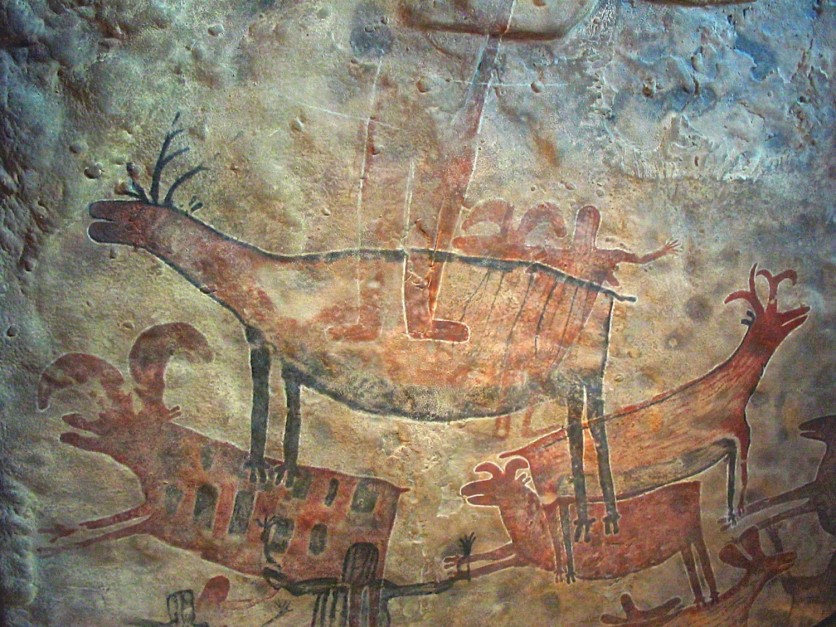Archaeologists from the University of Alicante have made an intriguing discovery that unveils the rich artistic history of Spain's Penáguila region.
Through the use of cutting-edge technology, they have identified Neolithic cave paintings dating back 7,000 years, reported first by Heritage Daily.

Neolithic Cave Paintings
The team's remarkable find was made during a drone survey of the Castellet-Barranc del Salt ravine and Port de Penáguila, providing unprecedented access to previously inaccessible mountain shelters.
The researchers employed small unmanned aerial vehicles (UAVs) equipped with cameras to capture detailed photographs and record videos of the walls within 18 shallow cavities. Within two of these shelters, the team stumbled upon cave paintings that offer a fascinating glimpse into the past.
The del Salt ravine, in particular, features captivating depictions of anthropomorphic archers alongside images of deer and goats. Notably, some of the animals appear wounded, struck by arrows, yet immortalized by the ancient artists.
These cave paintings also include representations in a schematic style that pose challenges in interpretation. However, dedicated study and analysis of this unique art form will undoubtedly contribute to a more comprehensive understanding of the Neolithic period and the evolution of cave art in the region.
Molina Hernández, an archaeologist and skilled drone pilot involved in the project, expressed enthusiasm about the significance of their findings.
Hernández stated that the utilization of drones had yielded a significant finding -a previously unknown site showcasing prehistoric cave paintings of diverse styles.
The team has ambitious plans for the future, intending to conduct a comprehensive project focused on archaeological prospecting and documentation of these invaluable paintings.
Most Prominent Rock Art Site
The importance of this discovery cannot be overstated. It ranks among the most prominent Neolithic rock art sites ever documented in the Valencian Community, according to the research team.
It is anticipated that this extraordinary find will serve as the catalyst for numerous future discoveries in the region, hidden away in remote shelters that have remained unnoticed for centuries due to their challenging accessibility.
The General Directorate of Culture and Heritage of the Generalitat Valenciana has received official notification regarding this remarkable archaeological discovery.
The credibility and importance of the discovery have been substantiated through the thorough exploration of the cave, made possible through the collaborative efforts of climbers Alex Mora i Monllor and Natxo Gómez Ors.
This remarkable discovery not only provides a glimpse into the artistic prowess of our Neolithic ancestors but also underscores the crucial role of advanced technologies in archaeological research.
Drones have proven to be invaluable tools in unveiling hidden treasures and unraveling the mysteries of our past. The newfound cave paintings stand as a testament to the richness of human history, sparking a renewed interest in exploring and preserving cultural heritage.
Related Article : Archaeologists Find an Extremely Rare 1,300-year-old Gold and Gemstone Necklace From a Medieval Woman in England

ⓒ 2025 TECHTIMES.com All rights reserved. Do not reproduce without permission.




